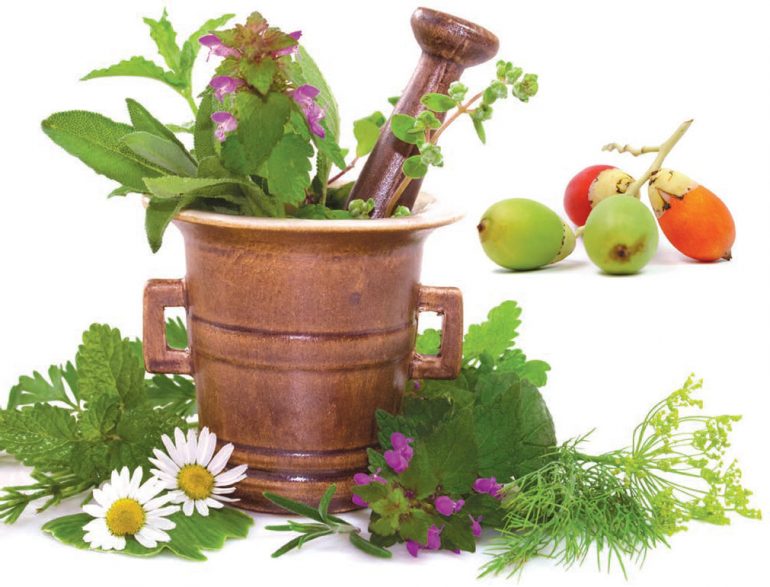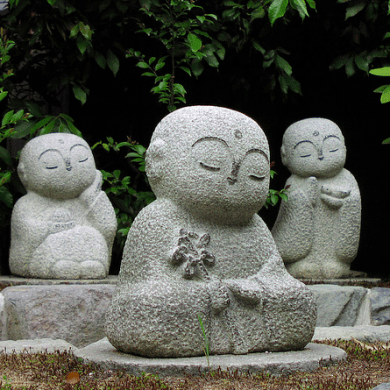Herbs are best regarded as healers that work in harmony with natural integrity, providing the body oneness with the five basic natural elements of ether, air, fire, water and earth. Herbs are mainly regarded as medicinal plants in simple terms. They tend to render supportive and hassle-free assistance. This is the reason herbs are easy to use and safe with no side-effects. Ayurvedic herbs have been used and supplemented by healers not only to treat but also to stay clear of ailments, thus promoting holistic natural wellness.
Ayurveda Herb Support for Respiratory System
One of the most irksome and inescapable ailment of the respiratory system is bronchitis. It might either be a meek, irritating cough; allergic cough; dry or productive cough – bronchitis is generally aggravating for the patient. You might try to ignore the symptoms of cough at first, yet at times when the simple signs of cough are ignored or even suppressed, it may take the form of a more grave disease like asthma or tuberculosis.
Symptoms of Bronchitis
- This disease is characterized by the inflammation of the bronchi of the lungs.
- Initially there is irritating, dry cough along with retro-sternal pain or discomfort; later on, the cough is persistent and productive with mucoid, blood-streaked sputum.
- A sensation of tightness in the chest, difficulty in breathing, and wheezing sound become apparent.
- A person might also suffer from mild to moderate fever, malaise, and sore throat.
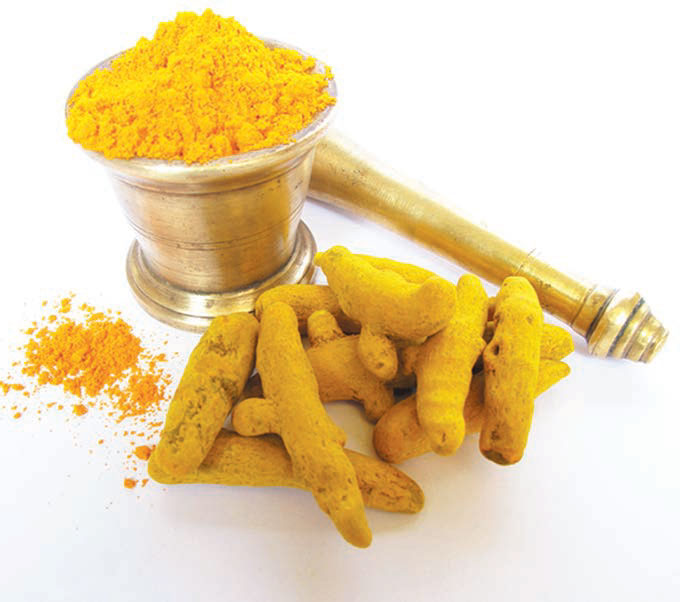
Ayurveda’s View of Bronchitis
There are mainly five types of bronchitis or “Kasa Roga” in the Ayurvedic texts.
- Born out of vitiation of Vata or the air humor.
- Born out of vitiation of Pitta or the fire humor.
- Born out of vitiation of Kapha or the phlegm humor.
- Bronchitis that results from an injury or infection.
- Caused as a consequence of tuberculosis.
Ayurvedic Herbs as Respiratory Healers
There are a number of Ayurvedic herbs to encounter the malady of cough. Herbs like Holy Basil, Betel, Ginger, Black Pepper, Turmeric, Cardamom, etc. come handy when dealing with the symptoms. Most of these herbs are part and parcel of home remedies. One herb that I would definitely want to highlight is the Holy Basil.
Holy Basil – Herb for Bronchitis
Holy Basil (Tulsi) is one of the prime Ayurveda herbs that bestow incredible support in strengthening and curing the respiratory system. According to Ayurveda texts, Holy Basil tends to decrease the aggravated Vata dosha or air humor, and Kapha dosha or the phlegm humor. Other than being an effective respiratory aid, Tulsi is believed to have anti-toxic properties. Also, seeds of the herb are energy giving, used mainly to overcome general weakness. The leaf part of the herb is commonly used. Other than this, flowers, seeds and the root of Tulsi are also used for medicinal purposes.
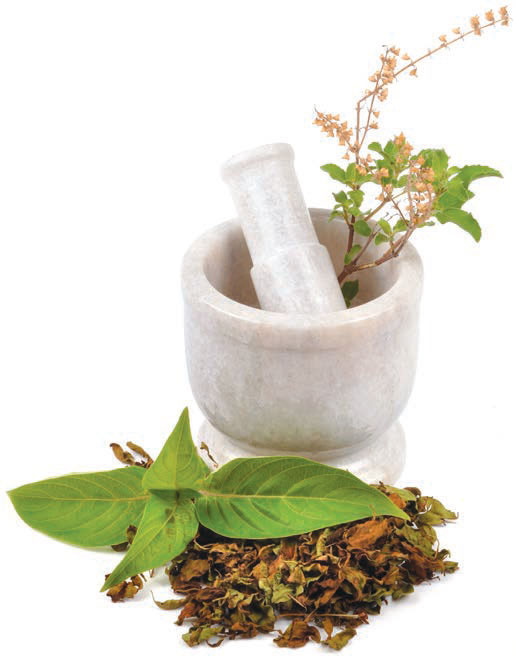
Properties of Holy Basil
Holy Basil is rough and light by nature. The taste of the herb is bitter and pungent and the aftertaste is bitter. It is hot in potency.
Usage of Holy Basil for Bronchitis
- Five to ten ml of the juice of Basil leaves mixed with a little Honey, may be taken twice a day to relieve cough and related symptoms of bronchitis.
- Tulsi leaves are to be chewed along with some Black Pepper. Honey can be added to it in moderate quantity. This makes it easy to extract phlegm, thus making basil a good expectorant herb.
- Research has proved this herb to possess unique anti-asthmatic and anti-tubercular properties.
- When bronchitis is accompanied by fever, you can take tea made with fresh leaves of this herb. Not only does this bring about a mild perspiration lowering the elevated body temperature, but the phlegm combating nature of the herb is a good aid in relieving productive cough. You may also supplement Basil tea with a pinch of ground Cloves, Pepper and Cinnamon.
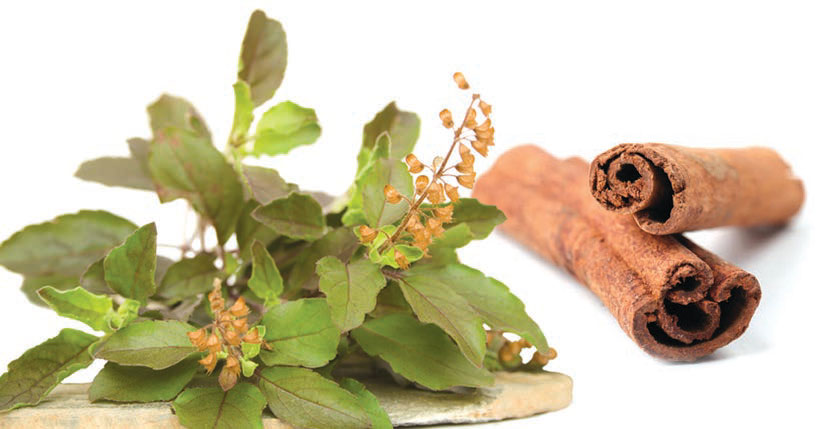
Ayurveda Herb Support for Digestive System
Indigestion is an ailment which is a common occurrence nowadays, often due to an improper diet and lifestyle imbalance. This particular malady that generally presents with the weakening of normal digestion tends to go on for years, thus taking the form of a chronic and distressing disease.
Symptoms of Indigestion
- Pain in the upper abdomen; belching; excessive wind formation; abdominal distension; false hunger; nausea and vomiting.
- Frequent changes in bowel movement.
- Heartburn and a continuous feeling of discomfort.
Ayurveda’s View of Indigestion
The Ayurvedic name for indigestion is “Ajirna.” Six types of the disease have been specified:
- Born out of vitiation of Vata or air humor.
- Born out of vitiation of Pitta or fire humor.
- Born out of vitiation of Kapha or phlegm humor.
- When a meal is not properly digested.
- When it takes the whole day to digest a meal.
- Natural indigestion of the previous meal.
Black Pepper – Herb for Indigestion
The Latin name of the herb is Piper nigrum and the popular Hindi synonym is Kali Mirch. The fruit part of the herb is what we use as a condiment and also as medicine. Medicinally, the recommended dosage of Black Pepper is half to one gram and it is advised that it be crushed or powdered just before use. Ayurveda recommends Black Pepper as a natural cure for digestive maladies. It is also a wonderful detox agent.
Black Pepper aids in opening as well as cleaning the entire channels of the body and extracting body wastes or accumulated toxins. This is mainly due to the herb being hot in potency and pungent in taste.
Properties of Black Pepper
Black Pepper is rich in Vitamins A and B and contains minerals like calcium, iron and phosphorous. It is bitter in taste and the aftertaste is bitter as well.
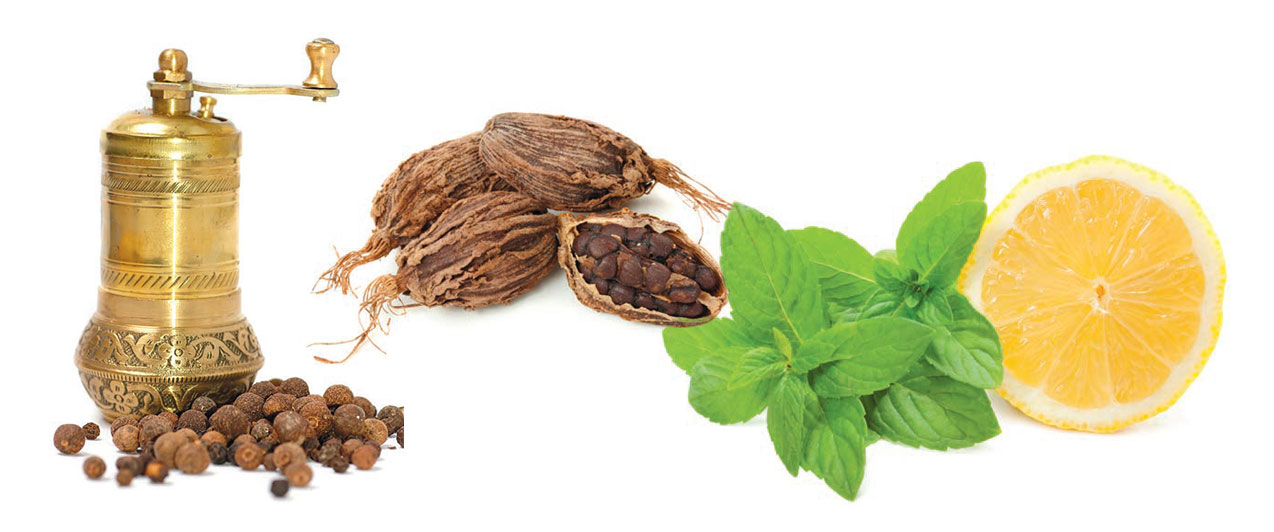
Usage of Black Pepper for Indigestion
- Small quantity of Black Pepper with Buttermilk will give quick relief to symptoms of indigestion.
- When there is a burning sensation in the abdomen (mainly on the upper side), which might be associated with poor appetite and loose bowels, Black Pepper can be taken. Onefourth teaspoon of Black Pepper powder with a glass of lemon water before the meals will aid digestion.
- When indigestion is in the form of recurrent loose stools along with mucus, you can take the recommended dosage of Black Pepper, Saindhav Salt, Aniseed, dried Mint and large Cardamom.
- When there is excessive production and expulsion of wind along with a foul smell, four or five freshly ground Black Peppercorns in a glass of water with a few drops of lemon juice taken early morning on an empty stomach will alleviate the symptoms.
- Indigestion, along with occasional loose motions, is another distressing feature of indigestion. This not only causes general malaise, but you also tend to feel lethargic and weak. You can chew on four or five Black Peppercorns and swallow the juice. You may drink some water afterwards and repeat this twice or thrice a day, depending upon the severity of the condition.
- Indigestion is usually accompanied by symptoms of loss of hunger. For this, I recommend you make a powdered mixture of Black Pepper Cumin seeds, dried Ginger and Saindhav Salt in equal quantities. Eat this after meals along with some warm water.
Ayurveda Herb Support for Bones and Joints
Arthritis is the most common and debilitating disease of the musculo-skeletal system. People who suffer with arthritis often struggle to walk which is why some choose to get wheelchairs to help them get around easier. Adjunct to characteristic features of joint pain, inflammation, tenderness, swelling and stiffness, this ailment often disables the individual. Osteo-arthritis, rheumatoid arthritis and gouty arthritis are the joint pain afflictions.
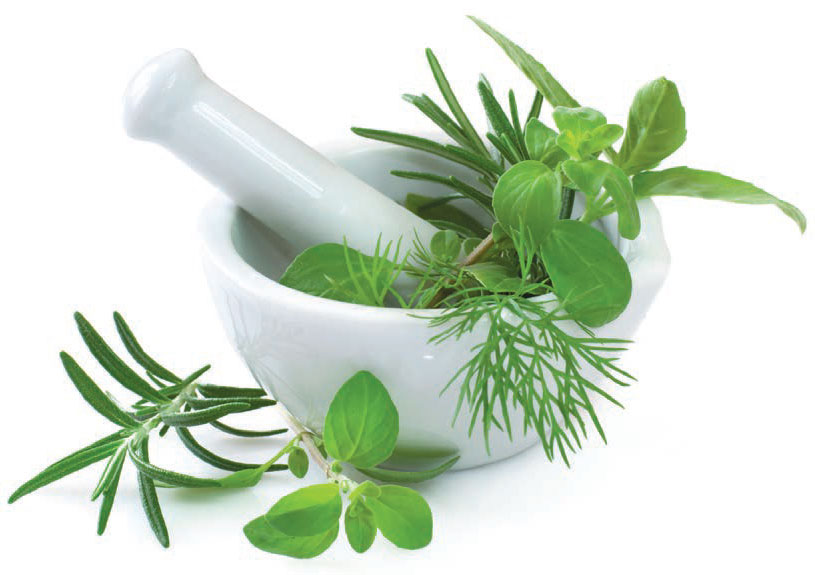
Symptoms of Arthritis
- Tenderness and enlargement of the joints, with limitation of movement.
- There is pain in the affected joints, which increases on movement and decreases with rest.
- Joint stiffness; and wasting of muscles.
- The pain might increase with change in the weather.
- Pain and inflammation in multiple joints with stiffness and symmetrical swelling of the peripheral joints.
- The small joints of the fingers and toes are initially affected.
- Morning stiffness is often experienced.
- Skin may develop subcutaneous fibrous nodules.
- Anorexia, weakness, weight loss, and characteristic deformities of the joints, as the disease progresses.
Ayurveda’s View of Arthritis
The degenerative joint disease or osteo-arthritis is called “Sandhigata Vata,” whereas rheumatoid arthritis is known as “Aama Vata.” According to Ayurvedic philosophy, joint pain develops mainly due to accumulated toxic matter which further results in the imbalance of the three doshas. Due to weakness of the gastric fire the food remains undigested, and the undigested juice intermingles with the vitiated humors of Vata, Pitta and Kapha. This results in pain and inflammation of the joints.
Guggul – Herb for Arthritis
Ayurvedic medicine is a rich natural source of herbs and herbo-mineral products that ensure sufficient relief from joint afflictions. A number of herbs like Garlic, Ginger, Guggul, Turmeric, Bishop’s Weed, Shilajit, Rasna, Nirgundi, etc. have been recommended time and again in Ayurvedic texts to get relief from joint pain. Ayurvedic therapy counsels both external and internal usage of the herbs. Of these, Guggul is one herb I would like to emphasize for joint pain.
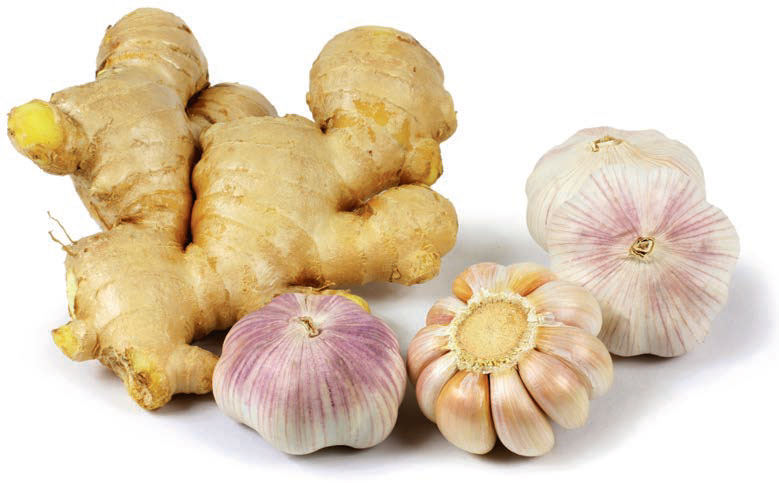
Properties of Guggul
Guggul is extracted from small, perennial shrubs or trees of Commiphora mukul. The extracts are collected by making incisions in the bark of the tree. This process is generally undertaken during the winter season. The extracts thus removed are fragrant and thick in consistency. They have different colors like red, brown, yellowish or black.
The English name for Guggul is Indian Bedellium. According to Ayurvedic texts, the best quality Guggul should be soft, slimy and yellowish in color. It should contain a sweet odor and be clear of impurities like mud, sand, etc. Furthermore, Guggul should make a milky emulsion when dissolved in hot water, melt in heat, and burn readily.
Guggul is light, robust, fragrant and rough when old; yet viscid and slimy when new. It is bitter, pungent and astringent in taste and the aftertaste is bitter. Guggul is hot in potency.
Usage of Guggul for Arthritis
- According to Ayurveda, Guggul is a destroyer of the aggravated Vata and Kapha doshas (air and phlegm humors). An imbalance in these doshas is the reason for joint pain and swelling. Thus the herb of Guggul benefits ailments resulting from a distortion in Vata like arthritis, sciatica, paralysis, etc.
- Local application of the paste prepared from Guggul is particularly beneficial in relieving pain and swelling. It is generally advised that you warm it and apply locally to the affected site of joint pain and inflammation.
- Guggul also holds antiseptic properties and thus aids in relieving painful, red and inflamed joints.
- Guggul (two to four grams) is recommended as a tonic to strengthen joints and muscles, as well as to increase general vitality and vigor. This needs to be taken at bedtime along with a glass of hot milk, preferably in winter.
 Dr. Sonica Krishan is an Ayurveda and Natural Lifestyle consultant based in Chandigarh, India. She has authored two books on natural home cures: Herbal Healers; Home Remedies. She is writing another book based on healing for various personality types. She is a prolific writer for various publications. Dr. Sonica has also pursued advance studies in Naturopathy and Yoga and is a Reiki channel. She is the founder member of an NGO called NAYAM. She has conducted a number of workshops, and given presentations and lectures relating to Ayurveda in modern times. www.herboveda.co.in
Dr. Sonica Krishan is an Ayurveda and Natural Lifestyle consultant based in Chandigarh, India. She has authored two books on natural home cures: Herbal Healers; Home Remedies. She is writing another book based on healing for various personality types. She is a prolific writer for various publications. Dr. Sonica has also pursued advance studies in Naturopathy and Yoga and is a Reiki channel. She is the founder member of an NGO called NAYAM. She has conducted a number of workshops, and given presentations and lectures relating to Ayurveda in modern times. www.herboveda.co.in

